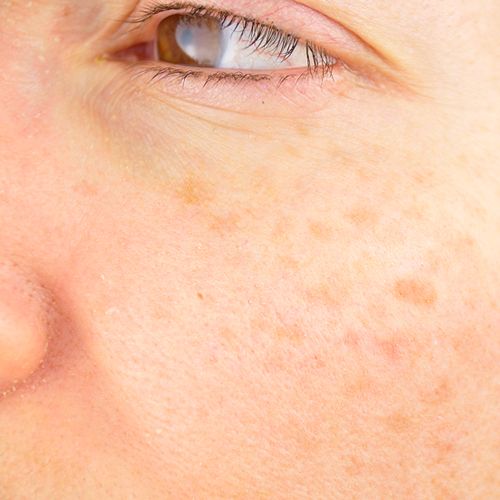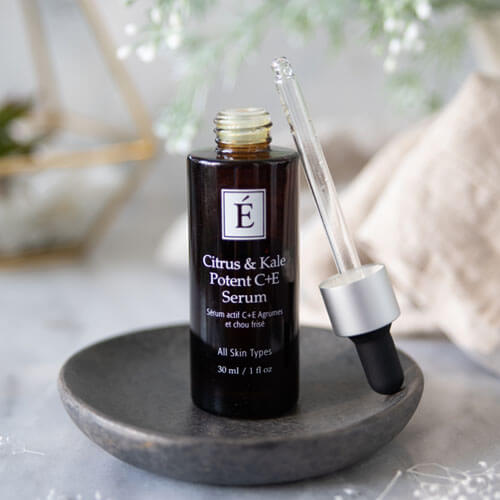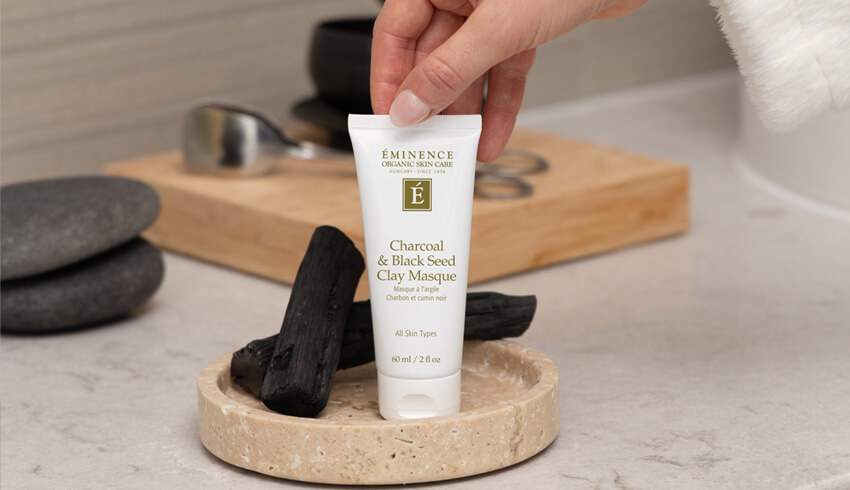
When it comes to the science of hyperpigmentation, who can you trust more than a dermatologist? Patchy, uneven skin tone can be one of the most stubborn issues for the complexion, which is why we tapped Dr. Hooman Khorasani and the full scope of his expertise on the topic. A triple board-certified, fellowship-trained cosmetic and skin cancer surgeon, Dr. Khorasani serves as the Chief of the Division of Dermatologic & Cosmetic Surgery at the Icahn School of Medicine at Mount Sinai, and he is one of the co-founders of the Tisch Cancer Institute’s Melanoma and Skin Cancer Center.

Dr. Hooman Khorasani’s Advice
We had the privilege of interviewing Dr. Khorasani on the subject of hyperpigmentation and the best ways to prevent and correct this common condition. From simple sunscreen to different types of laser treatments, here’s the dermatologist’s take on hyperpigmentation:
What Is Hyperpigmentation & What Causes It?
Hyperpigmentation is a very common condition that occurs when a specific part of your skin darkens compared to your baseline skin color. Sun exposure, hormones and inflammation all play very important roles in hyperpigmentation. Sun exposure causes stimulation of pigment producing cells in the skin called melanocytes. These cells in turn increase their melanin production, in order to protect other cells from UV radiation.
The rate of melanin production is also increased by hormones such as estrogen. Therefore, during pregnancy, most women should expect an increase in hyperpigmentation.
Another important factor is inflammation. Inflammation of the skin may leave dark patches, which is known as post-inflammatory hyperpigmentation. This condition is more common in darker skin types. Certain medical conditions, medications and genetic predispositions also play a role in skin pigmentation.

What Are The Different Types Of Hyperpigmentation?
Anytime you find a new dark spot that is concerning, it’s important that you have it evaluated by a dermatologist in order to ensure it is benign in nature. Most individuals should have an annual skin check and evaluate any new or changing dark spots or pigmentation changes.
Skin pigmentation can be categorized as a flat lesion (patch or macule) versus a raised lesion (papule or plaque). A patch of skin can darken, as in melasma or post-inflammatory hyperpigmentation. A skin lesion can be darker like a mole or seborrheic keratosis (liver spot) or some skin rashes like lichen planus.
Hyperpigmentation can further be defined at which level of the skin the pigment is residing in – liver spots tend to just be epidermal (the outermost skin layer) whereas melasma can be both epidermal and dermal (the second skin layer).

What Are The Best Ways To Prevent Uneven Skin Tone?
Sun is the primary factor that leads to an alteration in skin tone, which is also called dyspigmentation. UV exposure can increase melanin production, leading to dark spots and uneven skin texture. If one gets a sunburn, this can lead to inflammation of the skin and production of new blood vessels called telangiectasias, otherwise known as broken blood vessels (red spots).
Sunscreen and sun protection are essential to prevent sun damage and undesired skin tone changes. Direct sun exposure should be avoided when the sun is most intense - between 10 AM and 2 PM. Protective clothing such as wide brim hats, or clothing with SPF are also helpful in preventing skin damage and disrupting your natural skin tone.
How Can You Fix Dark Spots?
Dark spots that are left after inflammation from acne may fade by themselves over time. Depending on how much inflammation there was, and how much pigment there is in the skin, these can last for weeks, months or even longer. It is essential to use sunscreen to protect the hyperpigmented skin from sunlight, so it doesn’t get worse.
For more severe dyspigmentation, the most effective treatments are ablative and non-ablative lasers and light-based devices. Ablative lasers remove some of the outer layers of the skin. Non-ablative lasers, on the other hand, pass through the skin without removing layers. Both of these types of devices help with dyspigmentation, skin texture and tone.
For mild epidermal hyperpigmentation, a device such as Clear and Brilliant (Permea) may be the best choice, whereas the Fraxel 1927 laser may be used for moderate epidermal hyperpigmentation. In cases with severe sun damage and the presence of liver spots, a more powerful device like an ablative fractionated CO2 laser, such as Active FX, may be more effective. And for deeper dermal pigmentation, the alexandrite or Pico lasers may have to be used in order to reach melanin deposited in the deeper layers of skin.
The image below shows an example of results after an Active FX fractionated CO2 laser treatment (Photo credit: Dr Hooman Khorasani):

Besides laser treatments, there are a few alternative options to address dark spots.
This condition can be targeted with azelaic acid, Vitamin C, and bearberry extract being a few of the most common natural topical treatments used for mild hyperpigmentation.
Product Recommendations For The Appearance Of Hyperpigmentation
Now that we’ve heard from the expert, here are a few Eminence Organics products that we recommend to support professional treatments, containing ingredients that can target and break up dark spots.
Azelaic Acid: Bright Skin Licorice Root Exfoliating Peel
The results-oriented Bright Skin Licorice Root Exfoliating Peel works naturally to reduce the look of uneven pigmentation. Along with alpha hydroxy acids like lactic and mandelic acids, this gentle peel also harnesses azelaic acid as a key ingredient. An antioxidant, this acid works hard to reduce the look of inflammation and dark spots.

Vitamin C: Citrus & Kale Potent C+E Serum
A fast-absorbing serum that delivers potent but non-irritating vitamin C, the Citrus & Kale Potent C+E Serum is a powerful product for brightening the skin and evening out skin tone. Not only does this treatment firm and plump the skin, it specifically targets dark patches and brightens the overall complexion.
Bearberry Extract: Bright Skin Moisturizer SPF 40
This award-winning moisturizer executes a double hit on dark spots by protecting as well as brightening. With a built-in SPF 40 sunscreen, our Bright Skin Moisturizer SPF 40 prevents further sun damage. The bearberry extract, on the other hand, works by brightening the appearance of dark spots, leaving the skin looking even and luminous.
Do you suffer from hyperpigmentation? If so, what is your solution to this commonplace problem? Let us know in the comments or on social media, and find out more about Eminence Organics products at our Spa Partner.


